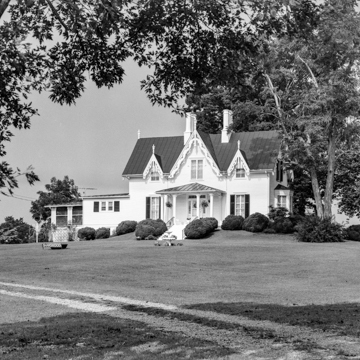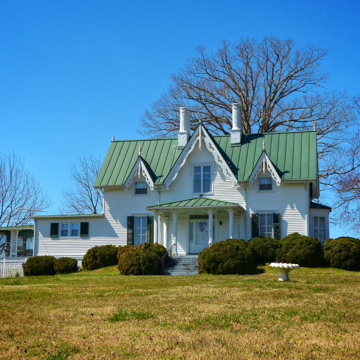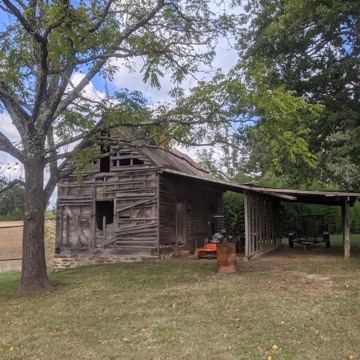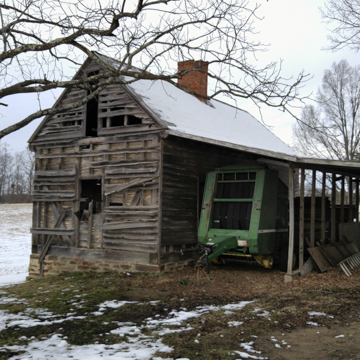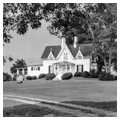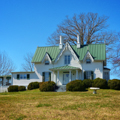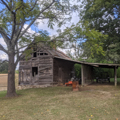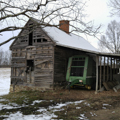At the center of what was once a 2,000-acre tobacco plantation is a fine Carpenter Gothic house built for Charles Edwin Miller. Designed by Alexander Jackson Davis of New York, Sharswood is almost a catalogue of Gothic Revival characteristics, from steep roof to clustered, polygonal chimney stacks, lacy bargeboards with finials here finished by fleur-de-lis crockets, a one-story porch with octagonal columns and tracery, diamond-paned windows, and hood molds over the windows (but no pointed-arch windows). Like most Gothic Revival houses in the area, it has a rectilinear form instead of picturesque massing.
The plantation also contained twelve outbuildings in which the enslaved population lived and worked. According to the 1860 census, there were 58 enslaved people working on the Sharswood plantation at the time, 23 of whom were children. The structures are still extant, including a farm office with sawn porch pillars, a brick smokehouse, and a cistern. One wood-frame structure was built before 1800 and likely used as the original main house. After 1820, however, the 16-by-32–foot building was divided into a duplex and used as a living space for some of the enslaved workers. It is possible that it served other purposes over time, including a kitchen and/or laundry space. The property also includes a cemetery for the enslaved, although the tombstones are unidentifiable due to years of neglect. On VA 640, just before the intersection with VA 40, is an almost abandoned mid-nineteenth-century, center-chimney workers’ house that was probably associated with Sharswood.
In 2020, the now 10.5-acre Sharswood property was purchased by California resident Frederick Miller, who had grown up in the area. Through genealogical research, Miller discovered his ancestors had been enslaved at Sharswood. Miller and his family established the Sharswood Foundation with the aim of restoring the buildings in which their ancestors lived and worked.
References
Crenshaw and Miller Family Papers, Southern Historical Collection, The Wilson Library, University of North Carolina at Chapel Hill.
Hedlund, Peter. “Virtual Tour of a Dwelling for the Enslaved at Sharswood Plantation, Pittsylvania County.” Encyclopedia Virginia, December 2021. https://encyclopediavirginia.org/sharswood/.
Heim, Joe. “An old Virginia plantation, a new owner and a family legacy unveiled.” Washington Post, January 22, 2022.
“Man unknowingly buys former plantation house where his ancestors were enslaved.” 60 Minutes. CBS News, February 12, 2023.
Sharswood Foundation. https://sharswoodfoundation.com/.









